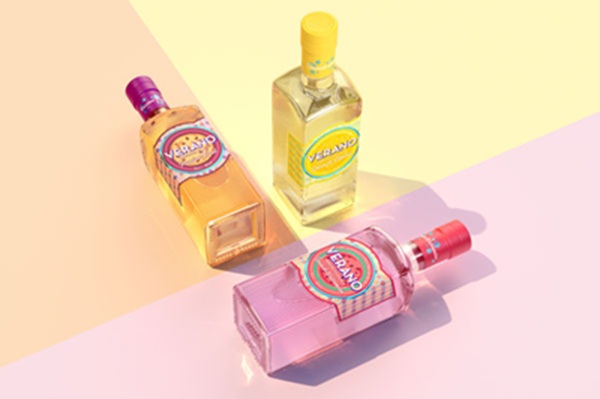Base spirits form the backbone of every cocktail, determining both the flavor profile and alcohol content of your finished drink. Each spirit brings its own characteristics, from botanical complexity to clean neutrality, which directly influences how other ingredients will interact. Professional bartenders spend years learning how different base spirits behave in various combinations, understanding that the choice of spirit can make or break a cocktail. When you grasp these fundamentals, you’ll understand why certain cocktails work beautifully while others fall flat.
Gin’s Botanical Complexity
Gin derives its distinctive character from juniper berries and a carefully selected blend of botanicals that vary by distillery and style. The juniper provides the piney, resinous backbone that defines gin, while additional botanicals like coriander, angelica root, and citrus peels create layers of flavor complexity. London Dry gin offers a crisp, juniper-forward profile that works exceptionally well in classics like martinis and negronis, where the botanical elements can shine through. Contemporary gins often feature unique botanical combinations that can include everything from lavender to exotic spices, creating opportunities for innovative cocktail applications, and these craft expressions are increasingly available at specialty stores such as The Bar.
Whiskey’s Grain Character
Whiskey brings grain-derived flavors and often oak influences from barrel aging, creating a rich foundation for spirit-forward cocktails. American whiskeys like bourbon contribute vanilla and caramel notes from charred oak barrels, while rye whiskeys add spicy, peppery characteristics that cut through sweet ingredients. Scottish and Irish whiskeys offer their own distinct profiles, from peated smokiness to smooth honey notes, each requiring different cocktail approaches. The complexity of whiskey means it pairs best with ingredients that complement rather than mask its inherent character.
Vodka’s Neutral Foundation
Vodka’s primary characteristic is its clean, neutral flavor profile, achieved through extensive distillation and filtration processes that remove most congeners and flavor compounds. This neutrality makes vodka an incredibly versatile base spirit that allows other cocktail ingredients to take center stage without interference. Premium vodkas distinguish themselves through subtle differences in mouthfeel and finish, often related to their base ingredients and production methods, and most well-stocked distilleries, like Mulholland Distilling, carry a range of options from standard brands to artisanal producers. The spirit’s clean profile makes it perfect for cocktails where you want fruit flavors, herbs, or liqueurs to dominate the taste experience.
Rum’s Sugar Heritage
Rum’s production from sugarcane or molasses creates a spirit with natural sweetness and tropical character that varies dramatically by region and production style. Light rums provide a clean base with subtle sweetness, perfect for refreshing cocktails where you want rum’s character without overwhelming other ingredients. Dark and aged rums contribute rich, complex flavors including caramel, spice, and sometimes funky, earthy notes that work beautifully in spirit-forward applications. The diversity within rum categories means understanding the specific style is crucial for successful cocktail creation.
Sourcing Quality Spirits
Specialty liquor stores typically offer the widest selection of premium base spirits and knowledgeable staff who can guide you toward appropriate bottles for your cocktail interests. Online retailers provide access to rare and craft spirits that might not be available locally, though shipping regulations vary by location. Many distilleries now offer direct-to-consumer sales, allowing you to purchase directly from producers and sometimes access limited releases. Wine and spirit clubs often provide curated selections and educational materials that can help expand your understanding of different spirit categories.
Tequila and Mezcal Distinctions
Tequila and mezcal both derive from agave plants but offer distinctly different flavor profiles that dramatically affect cocktail applications. Tequila, produced primarily from blue agave in specific Mexican regions, ranges from crisp and vegetal in blanco expressions to rich and complex in aged versions. Mezcal production allows for various agave species and traditional production methods that often include smoky, earthy characteristics from pit-roasting. These agave spirits require careful consideration in cocktail creation, as their bold flavors can either harmonize beautifully or clash terribly with other ingredients.
Professional Application Knowledge
Understanding how base spirits interact with acids and sweeteners, as well as modifying ingredients, allows you to predict how cocktails will taste before you make them. Each spirit category has optimal dilution ratios and temperature considerations that affect both flavor release and mouthfeel in the finished cocktail. Professional bartenders consider the proof of their base spirit when balancing cocktails, as higher-proof spirits require different proportional adjustments than standard bottlings. This technical knowledge explains why some cocktails taste perfectly balanced while others seem either too strong or too weak, despite following the same basic recipe structure.
Mastering the characteristics of different base spirits transforms your understanding of cocktail creation from guesswork into informed decision-making. Each spirit category brings its own personality to cocktails, from gin’s botanical complexity to vodka’s clean versatility, and recognizing these differences helps you choose the right foundation for any drink. The interplay between base spirits and other cocktail components becomes predictable once you understand how each spirit behaves in different contexts. With this knowledge, every cocktail becomes an opportunity to showcase the unique qualities that make each base spirit special.

